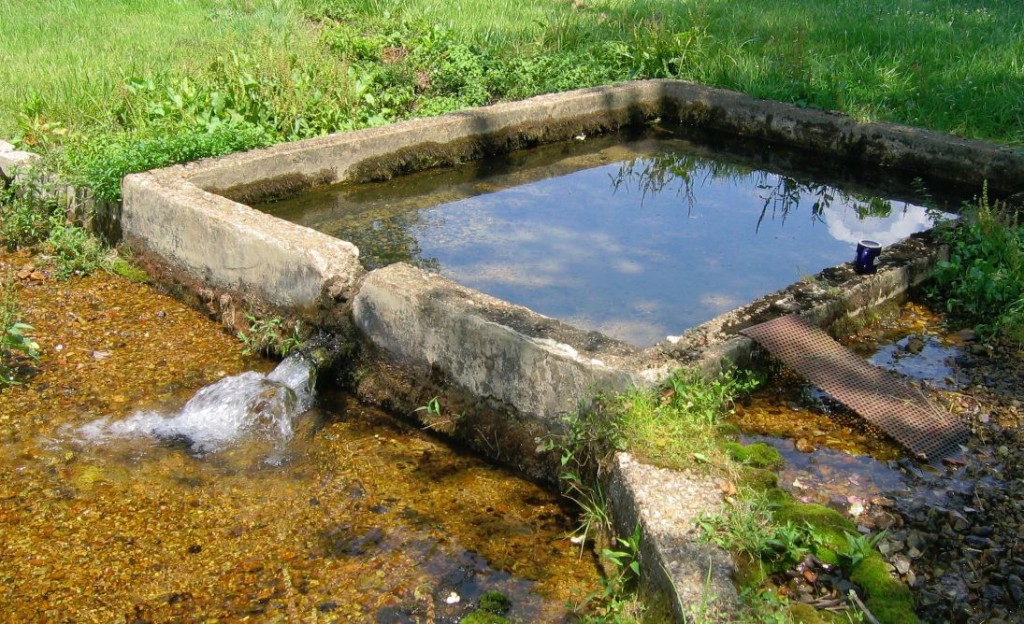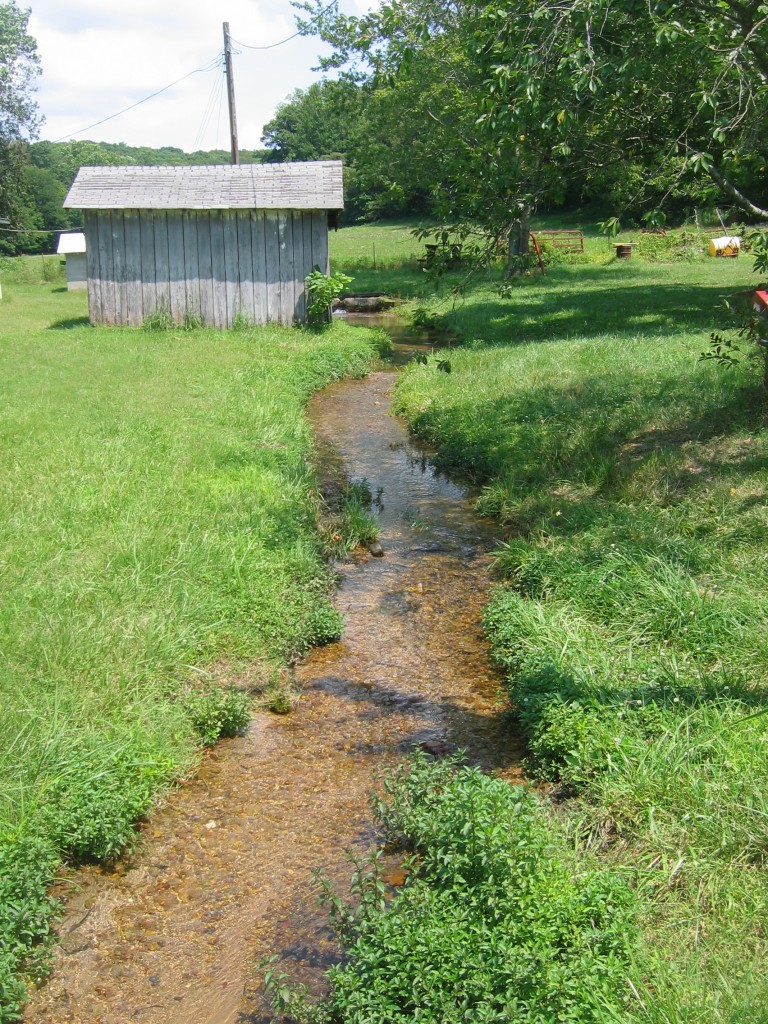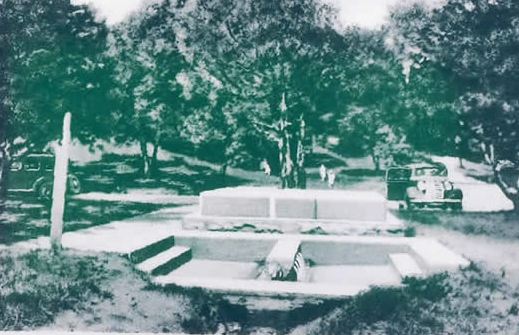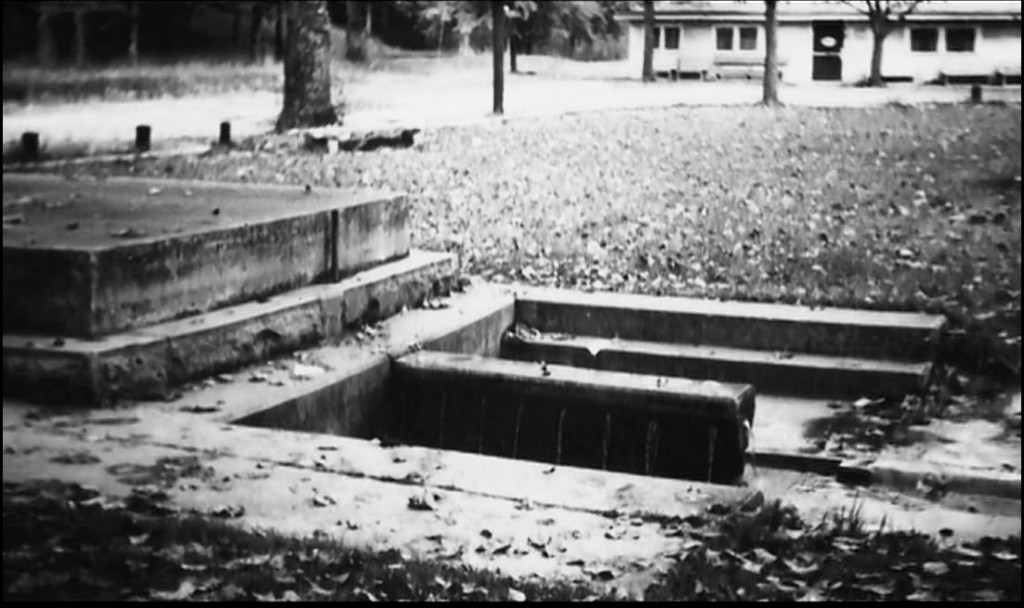In rural Lyon County, Kentucky, there are several springs dear to my heart. A few of them are known to most residents of Lyon County, but some are not.

For more photos and story, as well as video.
Most years, Kentucky is blessed with abundant rainfall. Rainwater and limestone combine to give us our fantastically thick and lustrous bluegrass. Water and limestone also created a wondrous system of underground caves and springs. The state is riddled with caverns, large and small. The most famous, of course, is the extensive Mammoth Cave system, hundreds of miles long and still not completely explored.

But nearly all Kentucky counties have their own caves and springs. In the 1970’s, a sinkhole opened up near our home that was large enough to swallow a school bus. And on the road where I grew up there were three springs within a few minute’s walk. These were springs that never went dry, no matter how hot or dry the summer season. Icy cold water flowed from them year ‘round.
As children we played in those chilly waters during the hottest parts of the summer. Many times we had to chase the snakes out of the swimming holes before we jumped in. We swung way out over the swimming holes, clinging to rough vines we chopped loose from the sycamore trees. It was like something out of “Tom Sawyer.”
In later years I used the nearest spring—a mere 50 feet behind our house on Panther Creek—as a resource for watering my garden during the hot , dry weeks of July and August. It was a small and unusual spring that didn’t bubble up so much as seep up through the leaves. The hole itself was no more than three feet across and the sand around the tiny spring would be covered each morning with fresh animal tracks. But this tiny spring would refill itself practically as fast as I could dip the water out.
The largest spring on Panther Creek was actually the source for the creek itself. It lay hidden near the dusty country road leading to Macedonia Baptist Church, at the base of a large limestone outcropping. Huge trees overhung the limestone wall, shading the spot and hiding it from above. Unless you just happened to walk up the creek when the water was low, you would never know a spring was there.
Sometimes when I ventured up to the “church springs” I would find it overrun with cattle, standing in the cold water swatting horse flies with their tails and chewing their cud. They were always reluctant to leave the cool, watery shade unless I switched them. When I did, they would lumber up the far bank and out onto the sunny pasture, neck bells clanging.
Old Kuttawa Springs with BBQ shackA better known spring in Lyon County, Kuttawa Springs, has all but disappeared under what is now Lake Barkley. It emerges only during dry times when the lake water level is allowed to dwindle so electricity can be made. Kuttawa Springs used to be a source of drinking water for many in the county, and the surrounding oaks provided picnic grounds for county residents for generations. Church socials and family reunions were held there in the deep shade beside the splashing spring waters. Hickory smoke wafted through the trees from the barbecue stand at the edge of the parking lot. But no more. The little town was relocated and the spring nearly forgotten when the Cumberland River was dammed by TVA in the late 1950’s. Though the gatherings exist now only in old black and white photos, the spring is still there and still pumping out clear, cold water, even though the spring itself is under water.

But my favorite spring of all still exists in nearly its original pristine glory. When I first spied the spring, it’s owner, Mr. Bingham, was sitting near it under a walnut tree. He loved to rest there after tending his cattle, just sitting and listening to the soothing waters. I envied him that.
I would stop by the spring, which I dubbed the “Bingham Springs” after a hard and hot day of bicycle riding. Mr. Bingham had told me I could stop by any time. The water was so clear and cold, and flowed strongly enough to form its own small stream. He had put a square concrete enclosure around it decades ago and he sometimes kept a large fish in it.
One particularly hot summer afternoon, Mr. Bingham told me of a drought that hit the area when he was a child. We calculated it had to happen in the 1930’s. It turns out that the great Dust Bowl years affected our county as well. Mr. Bingham said that during that time all the creeks and other springs in the county dried up, but not his spring. He told about how his father sent out word that anyone wanting water could have it. All they wanted, and for free. Horse-drawn wagons began arriving the next day, loaded with huge wooden barrels. People would fill their barrels all day long, from early morning until after sunset. And the spring never missed a beat. The flow of the stream was not lessened, and never dried up.
Click here for video of the Bingham Spring 2007 in 2007.
Mr. Bingham died a few years back. The new owners of the farm have changed the spring somewhat, shoring up the walls with newer construction. It doesn’t have the same weathered charm for me that it did, but perhaps it was necessary. The spring outlasted Mr. Bingham’s father, Mr. Bingham himself, and even the concrete walls. It flows strongly and clearly–unceasing.
It’s somehow a comfort to know that it will outlast even me.
© Wade Kingston

